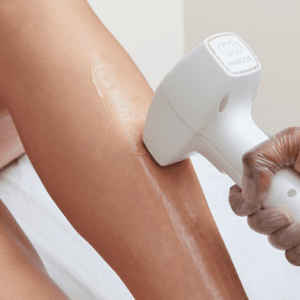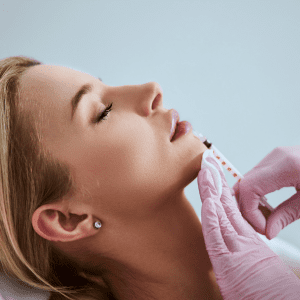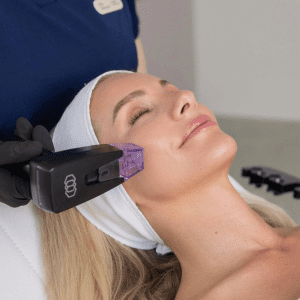Chemical Peels
“Chemical peels exfoliate and rejuvenate the skin, addressing acne, pigmentation, and fine lines for a smoother, youthful appearance.”
Our Results

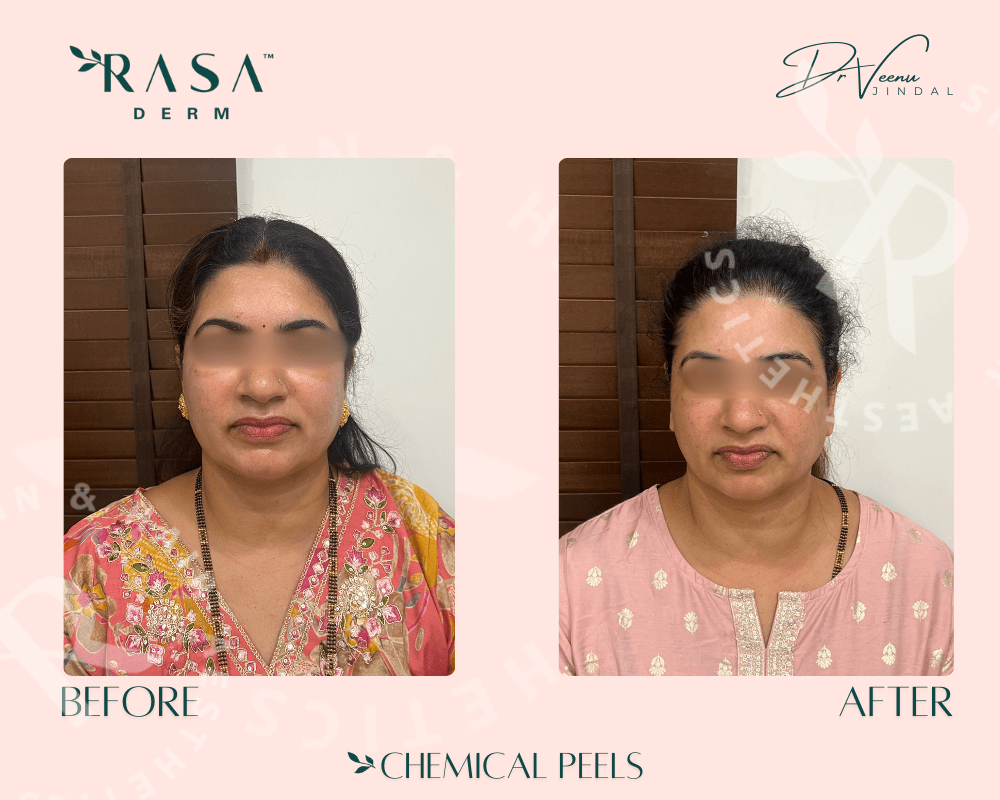
Seven Key Points For Chemical Peels
Acne and Acne Scars
The treatment using chemical peels addresses acne by clearing pores while lowering excessive skin oil production. The procedure causes skin renewal while removing acne scars and preventing additional acne outbreaks, which results in better clarity and smoothness.
Sun Spots and Hyperpigmentation
The exfoliating action of chemical peels removes sunspots along with pigmentation issues from the skin’s surface. The treatment dissolves melanin deposits until dark spots fade, while skin tone becomes more uniform to produce a brighter complexion.
Wrinkles and Fine Lines
Chemical peels activate collagen production, which reduces wrinkles together with fine lines on the skin. The treatment enhances elasticity, resulting in a smoother and firmer texture that appears rejuvenated for a youthful appearance.
Rosacea and Redness
Chemical peels provide an effective solution for decreasing rosacea inflammation and its associated redness. The treatment provides relief to sensitive skin by decreasing visible blood vessels and achieving consistent tone when used repeatedly.
Pigmentation and Melasma
Chemical peels prove to be an efficient solution for treating patients who aim to resolve both melasma and pigmentation issues. The treatment targets melanin deposits located deep in the skin to create a gradual process for fading dark spots, which results in even tone.
Shrinking Open Pores
Chemical peels help to improve skin texture and minimise open pores. The exfoliation process helps to develop a more polished appearance with tighter pores through the treatment.
General Glow and Skin Lightening
Using chemical peels leads to skin brightening because the process eliminates dead skin cells to reveal new glowing skin. This treatment provides consistent results, which establish a fresh complexion that radiates health and vitality through its appearance.
What Is A Chemical Peel?
The dermatological industry uses chemical solutions through their popular treatment to exfoliate skin surfaces for their dermatological solution. The procedure eliminates dead skin cells while activating the generation of fresh cells,, which produces smoother and more youthful skin results. Dermatology addresses various skin problems that affect acne as well as skin discolouration together with ageing signs and texture.This solution, applied under controlled conditions, enables skin regeneration through a non-invasive approach for facial beauty improvement.
How Chemical Peels Work?
This exfoliation process in chemical peels requires applying solutions that trigger planned skin cell shedding. The solution operates by dissolving skin cell bonds to enable their removal and expose a new youthful layer underneath. The selected type determines the skin texture and appearance changes together with the healing duration, which penetrates through superficial or middle or deeper layers.
The exfoliation process triggered by chemical solutions activates healing mechanisms, which lead to collagen and elastin production. The treatment produces skin that becomes firmer while developing a smoother texture with better elasticity. The treatment’s exfoliation process activates skin renewal and simultaneously cleans pores and treats pigmentation and different skin imperfections.
Types Of Chemical Peels
Chemical peels exist in three categories, which establish their exfoliation strength by classifying them as superficial (light) peels, medium peels, and deep peels. Different peel options provide unique advantages to treat specific skin problems while requiring unique recovery periods.
1. Superficial Peels (Light Peels)
Superficial chemical peels represent the mildest form of treatment that suits patients with minor skin conditions. The superficial treatment removes outermost dead skin cells through exfoliating agents like glycolic acid, salicylic acid, and lactic acid. The treatment of fine lines and acne together with dullness and small skin discoloration can be achieved through superficial peel procedures. The treatment immediately produces glowing results while simultaneously improving texture.
Patients need to recover for a brief period following the treatment since the procedure operates with a gentle approach. People normally can return to their typical activities without delay following this procedure. The procedure produces minor redness with occasional irritation that disappears swiftly. The treatment of superficial peels can be performed regularly by people who want to maintain their skin health.
2. Medium Peels
Medium peels represent a more intense version of superficial peels because they address skin issues at various depths. The procedure uses TCA or stronger acids, which penetrate the epidermis and dermis to treat major skin problems such as sun spots, acne scars, and uneven tone. The best results from this treatment come to people who suffer from serious skin issues like mild wrinkles and hyperpigmentation or acne.
The recovery period for this lasts longer than superficial peels but remains between one week and several days. The healing process includes redness combined with swelling and peeling until it reaches a normal state. The treatment results in better outcomes than superficial peels; thus, patients need to follow the recommended post-procedure instructions that may include sun protection and prescribed skincare products.
3. Deep Peels
Deep peels are the strongest chemical peel treatment, which treats severe skin issues such as deep wrinkles and major pigmentation and scarring. The deep layers of skin accept penetration from phenol and similar chemicals in deep peels to create substantial effects. This delivers the best results to patients who need extensive sun damage and ageing signs treatment and severe acne scar removal.
The healing period for this treatment lasts the longest compared to other peel types since patients must recover for multiple weeks. During skin healing, patients experience severe redness and swelling along with intense peeling. They require experienced dermatological professionals to perform them because of their strong characteristics. This delivers major skin texture and tone and appearance improvements to patients.
Who Can Benefit From Chemical Peels?
This treatment works effectively on all skin types regardless of whether they are oily, dry, or combination types. People with sensitive skin who also have particular skin disorders should take extra precautions before undergoing chemical peel treatment. This, including deep peels, must be avoided by patients who have active acne and those with eczema, rosacea, and a keloid scarring history.
Chemical peels deliver exceptional advantages to people who have the following skin conditions:
- Acne And Acne Scars: This provides acne treatment by cleansing pores while decreasing sebum production. It delivers major advantages in treating acne scars as well as dark spots.
- Hyperpigmentation And Sun Damage: The treatment of sun damage combined with hyperpigmentation and uneven skin tone becomes possible through chemical peels. This treatment serves to treat melasma and age spots, which develop because of sun exposure and hormonal fluctuations.
- Fine Lines And Wrinkles: The application of chemical peels leads to collagen production, which reduces wrinkles and fine lines while developing a firmer, more youthful skin appearance.
- Uneven Skin Texture: The treatment of uneven texture through chemical peels benefits patients who have rough skin because these peels smooth the texture while reducing pore visibility.
- Dull Skin: The superficial peel treatment provides immediate skin radiance to unappealing skin by removing dead skin cells, which expose the brighter skin underneath.
A consultation with a dermatologist is required to select the appropriate peel type based on your individual skin type and concerns prior to undergoing this procedure.
Advantages Of Chemical Peels
Chemical peels provide multiple advantages that help patients achieve better-looking skin that appears healthier, smoother, and younger. Some of the primary advantages include:
- Improved Skin Texture: The regular use of chemical peels enhances skin texture by producing a smooth texture, which reduces pores and develops a uniform texture.
- Acne Treatment: The treatment method known as chemical peels proves beneficial in acne control by treating blocked pores as well as excessive oil production and inflammation. The treatment effectively reduces both acne scars and dark spots.
- Sun Damage And Pigmentation: Sun damage combined with pigmentation receives successful treatment to create an equal skin colour.
- Anti-Aging Effects: Chemical peels stimulate collagen production, which reduces wrinkles and fine lines and sagging skin to obtain a youthful skin appearance.
- Skin Brightening: Skin Brightening produces effective results in brightening tired, dull skin while creating a radiant and healthy appearance.
- Minimized Scarring: It works effectively to treat acne scars and any other scarring that will improve scar appearance and healing.
Procedure: What To Expect
A qualified dermatologist needs to be consulted prior to undergoing chemical peel treatment. A dermatologist examines your skin characteristics and desired improvements to determine which peel type will work best for you.
The chemical peel procedure involves the following steps:
- Cleansing The Skin: The skin preparation begins with thorough cleaning to remove all oils, dirt, and makeup before the chemical solution can penetrate properly.
- Application Of The Chemical Solution: The dermatologist applies the chemical solution, which produces a slight burning sensation, to the skin surface. The solution remains on the skin for an amount of time that depends on the strength of the peel.
- Neutralizing And Removal: After completing its purpose, the solution requires neutralisation (if needed) before removal. Patients who undergo deeper peels need multiple treatments for complete skin exfoliation.
- Post-Treatment Care: After the peel procedure the dermatologist will provide you with specific instructions for caring for your treated skin. Patients need to use particular moisturisers, serums, and sunscreens according to doctor instructions for skin protection while it heals.
Post-Treatment Care And Recovery
Follow the dermatologist’s instructions for post-treatment care because chemical peels make your skin more sensitive. The following general guidelines should be followed:
- Avoid direct sun exposure for several weeks after the peel.
- Use gentle skincare products and avoid harsh exfoliants.
- Apply sunscreen regularly to protect the skin.
- The recommended skincare plan should be followed to support healing and regeneration.
- The healing process includes skin peeling or flaking that usually takes several days to complete.
Conclusion:
Chemical peels represent a versatile and effective solution for treating different skin issues. It delivers significant improvements for people with acne and pigmentation as well as fine lines and rough texture while requiring minimal recovery time. You can choose the best peel for your skin by understanding the different chemical peel options and their advantages. Seek guidance from a qualified dermatologist to receive treatment that matches your individual skin requirements.
treatment procedure
Patient Journey – Chemical Peels Treatment
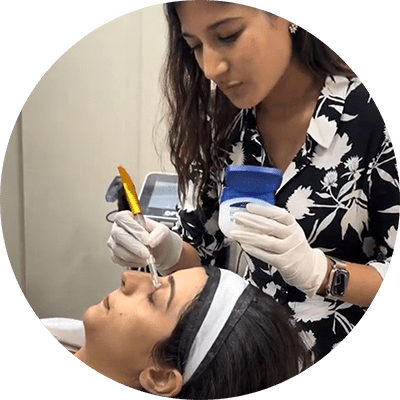
Sealing Sensitive Areas
Apply jelly to protect sensitive skin from irritation.

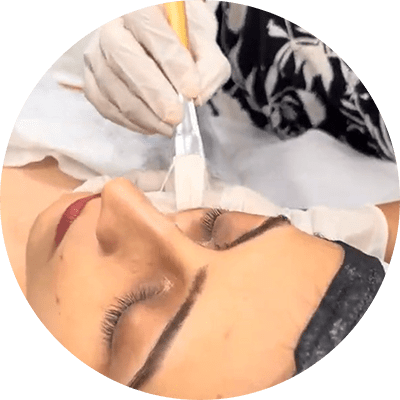
Peel Application
Apply the peel solution to exfoliate and rejuvenate skin.

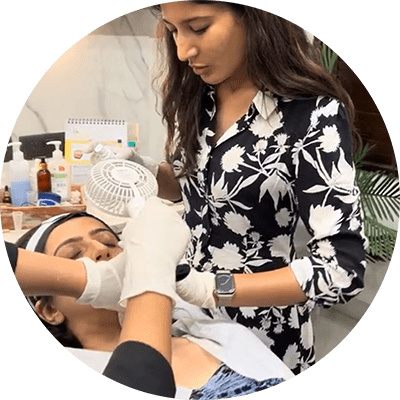
Neutralizing the Peel
Neutralize the solution to stop the reaction and calm the skin.
FAQs for Chemical Peels
A qualified dermatologist can perform chemical peeling safely. The main risks of this procedure include skin irritation and redness, but these side effects are usually short-term and easily controlled.
The number of sessions depends on your skin type and concern. The results from one session are sufficient for some patients, but others need to undergo multiple treatments.
They prove to be an excellent solution for treating acne, pigmentation, sun spots, and wrinkles because they address multiple skin problems.
The cost depends on the type of peel and the clinic. The prices for these sessions range between several thousand rupees and multiple tens of thousands of rupees.
The cost depends on the type of peel and the clinic. The prices for these sessions range between several thousand rupees and multiple tens of thousands of rupees.
The combination of chemical peels with microneedling or laser treatments is possible when your dermatologist recommends it for better results.
This therapy triggers collagen production, which leads to a gradual reduction of fine lines and wrinkles in the skin.
It works for most skin types, yet patients with sensitive skin or eczema need to consult about alternative treatment plans.
It provides results that can persist for multiple months based on the peel type and your post-treatment skin care routine.
The post-peel care routine includes using gentle skincare products and moisturizer application and sun protection to help the skin heal and achieve better results.






